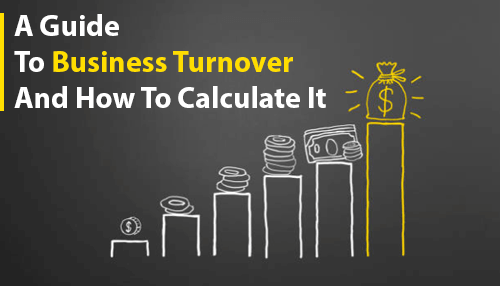Every entrepreneur wants to know where his/her business stands at a particular point of time. In this case, it will be wise to use markers like Business Turnover. It indicates business health. But the question is how to calculate it the correct way.
What is Business Turnover?
Turnover is considered to be the total sales achieved by the business within a specific time period. Often it is termed as ‘income’ or ‘gross revenue’ and not the same as profit. The latter measures earnings.
Business Turnover measures business performance. It is important to know your business turnover figure throughout your business tenure, right from securing investment to planning, measuring performance to company valuation, in case, the plan is to sell it off.
Calculation steps to follow
Calculating Business Turnover is easy. Having accurate records can help add together total sales. Generally, turnover is measured for a specific time period, like tax year.
- To calculate gross profit, subtract sales cost from turnover.
- To calculate net profit, take gross profit. Subtract all expenses including tax liabilities.
Why turnover is crucial for a business?

Entrepreneurs are to understand their turnover to calculate what is required to meet the target profit. When compared to turnover made, if there is noticed low gross profit, then it becomes essential to reduce sales cost, like renegotiating supplier contracts.
In case, there is low net profit as turnover proportion, then consider ways to enhance the overall efficiency of your business. For instance, can savings be made on a few administrative expenses? Is it possible to claim the allowable expenses of your business?
Difference between profit & turnover
In business, turnover is not similar to that of profit. Rather, turnover can be stated to be the total income that your business earned during a specific time period like net sales figures. But profit refers to earnings made after the deduction of all expenses. It is possible to measure profits in two different ways. Gross profit is determined by deducting the cost of services/goods sold from sales. It is also referred to as ‘sales margin’.
The amount left over during a particular time period after deduction of all expenses like tax and administration is ‘Net Profit’. Several potential definitions are present for this, which does not directly refer to finances. ‘Turnover’ for example may also mean employee numbers leaving the business in a specific time period, termed as ‘churn’.
You can calculate ‘accounts receivable turnover’, which is time length taken for customers to complete their payment if credit is offered to them.



